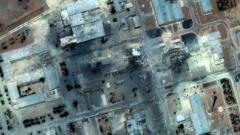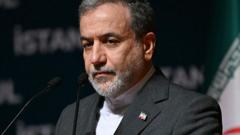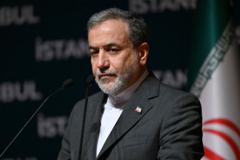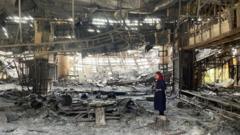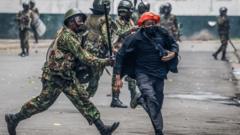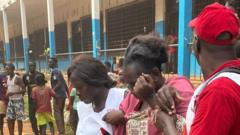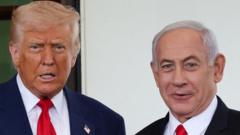In light of recent Israeli bombardments and ongoing political tensions, Tehran appears to be returning to normalcy, yet its residents remain shaken by the events. Amid mixed sentiments of defiance and fear, Iranians are struggling with the current state of their country while hoping for improved relations with the West.
Uncertain Recovery: Tehran Residents Face a Troubled Future
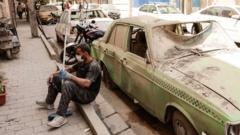
Uncertain Recovery: Tehran Residents Face a Troubled Future
As Tehran emerges from a series of Israeli strikes, the city's residents grapple with the lingering trauma and uncertain political landscape.
In the aftermath of intense military operations and political upheaval, Tehran finds itself at a crossroads. The Boof cafe, nestled in the historically charged area of the once-operational U.S. embassy, symbolizes the juxtaposition of vibrant life and persistent tension that characterizes the Iranian capital today. Barista Amir serves refreshing iced Americanos while expressing a desire for improved U.S.-Iran relations. "US sanctions hurt our businesses and make it hard for us to travel around the world," he laments, as he observes only a handful of tired faces across the café.
Beyond the café's walls, the air is thick with mixed emotions. A short distance away, the headquarters of Iran's state television, IRIB, lies in ruins following a recent Israeli missile strike. The destruction serves as a constant reminder of the regional conflict, and Ayatollah Ali Khamenei's defiant speech broadcast days later emphasized the deep-seated hostilities between Iran and the U.S. While the Ayatollah cautions against surrendering to foreign pressures, many citizens face a more pressing concern: their safety.
In the Taleghani General hospital, head nurse Ashraf Barghi witnesses the human cost of the recent hostilities. As she treats dozens injured from the strikes, the fear of future attacks lingers in the air. "We don't trust this war has ended," she shares. These sentiments echo throughout the city, as Iranians come to terms with 627 fatalities and thousands more injured from the conflict.
Despite this turmoil, life in Tehran steadily resumes its pace. The streets are busy again, as residents aim to reclaim a semblance of normalcy in their day-to-day routines. Shops reopen, and gatherings like an open-air concert at Tehran’s iconic Azadi Tower signify a longing for unity amid uncertainty. Yet the undercurrent of anxiety remains potent, underscoring profound existential worries.
Mina, a young woman overcome with emotion, articulates the shared despair many feel. "It's so heart-breaking. We tried so hard to have a better life but we can't see any future these days," she confides. Conversations between residents reveal a range of views, where both supporters and critics of the government express a universal desire for greater freedoms and better communication from their leaders.
As Tehran residents navigate their immediate reality, their conversations also reflect broader geopolitical considerations. An 18-year-old university student named Hamed articulates a sense of defiance, challenging the narrative of domination over diplomatic engagement. "Attacking our nuclear bases to show off that 'you have to do as we say' goes against diplomacy," he states, embodying a yearning for representation in the dialogue shaping their lives.
The struggle for Tehran—a city balancing between recovery and anxiety—illustrates the complex socio-political landscape in Iran today. With international relations in flux, and the ever-looming threat of conflict, the people of Tehran search for hope in the midst of a bleak horizon.



